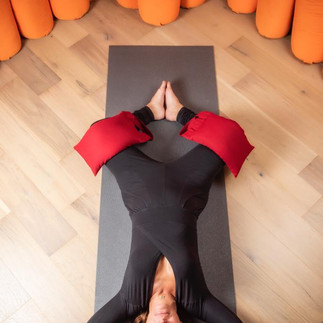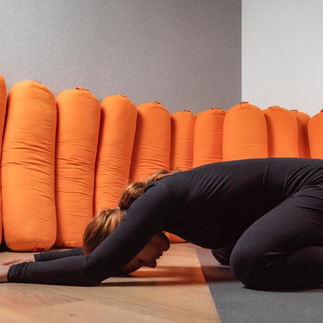From My Brain to Yours, Moms
- Kaylee Blubaugh

- May 6, 2022
- 6 min read
Mother’s Day is upon us and I am here to share a personal experience from not just my brain, from my heart.
I always advocate that every mom is a working mom. I don’t empathize with the social nomenclature of “a working mom” or “a stay-at-home mom”. Even worse “she is just a mom”.
As a mother myself, raising two teenagers and cultivating my own business in Dallas, my work at home remains absolutely the same as it was when I was “full time mom”. The job and the needs are there: for the kids, for the house, for the family, for the pets, regardless of where the mom is working. I can confirm that moms work about 90-100 hours per week, with no weekends or days off; above all, we, the moms, know that our kids grow and go, but our job continues for the rest of our lives.
I define this essential work translated by mom’s presence, action, talk, love, smile and much more as an Invisible Work. It’s there, done and made, but nobody really sees it, except when the work is late or not done. I remember when I was living with my parents in Brazil and one day, when I was about 24 years old, I was getting ready for work and I opened my closet, and I didn’t find the clothing that I was planning to wear that day. I got so mad at my mom, and I remember whispering to myself: “what does she do all day that my clothes are not ready?” Well, my mom was invisibly working all day raising four kids, cooking, cleaning and making sure our home was impeccable and we had food on our table every day and clean beds to sleep in. Sadly, I was not able to see how beautiful and honorable her work was.
Forgive me mom for underestimated your value and your presence in our home.
But what I really want to share here with you, moms, celebrating and honoring our special day, it’s about another Invisible aspect of being a mom: the health of our brains.

I can ask you a question: at the end of the day after working 16-18 hours, when you collapse in your bed, what is the part of your body that feels the most depleted? Any answer is valid here: feet, legs, back, face, shoulders, because they can physically show through pain or discomfort; however, one answer is the most relevant for what I want to share with you: the brain. At 10:30pm we are done (or even later) with our work in and out of the house, and we all say this: “I am exhausted”. The exhaustion feeling is not on the body only, but also in the brain: the organ is depleted, foggy, unclear, lack in focus and what’s happening inside is invisible. “So, what Christina? What’s the problem with this?”
Well, moms, the problem is when the invisible state of the brain becomes visible through a physical manifestation of the unbalanced function of the organ which is, in other words, when the body develops diseases, and the person becomes ill. That’s the point here: the body and the brain are connected for the good and the not so good.
This message would serve to anybody in the planet Earth at this moment post-Covid when stress, mental health, losses and instability became a severe reality. However, Moms are carrying even more during these days facing many different challenges while raising kids, bringing income home, dealing with school systems, facing divorces, losses and unfortunate situations. With all that in their lives, moms still need to BE MOMS: cooking, cleaning, loving, driving, teaching. As a result, their brain is cooked, and it starts to manifest its overuse into the body and the mind with physical and mental diseases. Add here emotions, feelings and experiences as trauma and pain as a big source of instability and unbalanced state of mind.
The scenario is this. Now, what would I say to YOU, MOM, that is facing a reality as I described above? How can you be and feel different in a consistent way as we are all facing a reality that it seems will not be changing anytime soon?

I am happy to share with you that there is a way to live better, different and healthier and it’s simple, accessible and sustainable. It’s the practice of YOGA as a consistent routine in your life. Yoga, in its nature of a therapeutic aspect of the ancient practice. It’s not a name, a brand, a person, a guru. It’s not even a workout, an achievement of shapes or a sweat experience. It’s YOGA, the pure source of health that honors our brain, mind and body through pausing, resting, meditating and classical postures.
The studies of how yoga accesses mental and physical health promoting a more regulated nervous system and a healthier and well functional body and mind, were developed in Brazil. Starting in the 1960’s with the pioneer in Yoga Therapy, Professor Hermogenes with his two incredible books “Yoga para Nervosos – Aprenda a administrar seu stress” and “Auto Perfeicao com Hatha Yoga – um classico sobre saude e qualidade de vida”, both being an icon in the Brazilian literature about Yoga, Stress, Nervous System and Study of Cases showing and proving the benefits and the cure that the therapeutic practice delivers to the bodies and minds suffering from an unbalanced nervous system.
In the United States, the pioneering came from the University of Massachusetts (UMass) in the MBSR (Mindfulness Based Stress Reduction) program developed by Jon Kabat-Zin in the 1970’s where Yoga, body-scan meditation and mindfulness are a source of healing for pain, trauma and regulation of the nervous system. One of the most intelligent writings about the body-mind connection is “Full Catastrophe Living – Using the Wisdom of your body and mind to face stress, pain and illness”, by Jon Kabat-Zin, 1990.
But how is Yoga so powerful to establish a healthier body system? Because the classical poses (asanas) with a therapeutic design are mainly focusing on the access of our Nervous System which is the main system to keep our body-brain-mind in balance. A well functioning and regulated nervous system (an equal access between sympathetic and parasympathetic branches) represents a well functional and regulated body, brain and mind, capable of making decisions and choices with more awareness, clarity and calmness; able to co-regulate with others in a more responsive way instead of reactive; able to self-regulate and befriend the nervous system at any time life brings obstacles, challenges and instability in all senses; able to live with joy, grace and positivity. The result is: we become healthier and less susceptible to illness and diseases.
What are the Asanas that I would say are the most effective in the yoga practice to regulate our nervous system? Classic poses where the Vagus Nerve is accessed, and the Psoas Muscle is expanded.
The Vagus Nerve is the chief of the access to the parasympathetic nervous system, responsible in bringing our brain and heart to a more relaxing, slow pace and decompress. We, Moms, live under the sympathetic mode most of the time – autopilot, fast and busy pace; yoga is the source of shift the mode that we operate to a much calmer, slower and overall peaceful way to be and feel.

The Psoas Muscle is the muscle of the soul. According to Liz Kock’s, a International Teacher and author with 43 years of experience working with the psoas and creator of the Core Awareness Program, the Psoas is “an organ of perception composed of bio-intelligent tissue and literally embodies our deepest urge for survival, and more profoundly, our elemental desire to flourish. Kock believes that “our fast-paced modern lifestyle (which runs on the adrenaline of our sympathetic nervous system) chronically triggers and tightens the psoas – making it literally ready to run or fight”. She continues saying “if we constantly contract the psoas due to stress or tension, the muscle eventually begins to shorten leading to a host of painful conditions including low back pain, sacroiliac pain, sciatica, disc problems, scoliosis, spondylolysis, hip degeneration, knee pain, menstruation pain, infertility and digestive problems”. And she attests that “your psoas is the primal messenger from the core of your being”.

Here some examples of Asanas and access to Vagus Nerve and Psoas Muscle.
On Mother’s Day celebrate yourself, your health, and remember Moms: we are the only ones responsible for our own well-being.
“The Beauty of a living thing is not the atoms that go into it, but the way those atoms are put together”
Carl Sagan
From my brain to yours, with all my heart
Christina
















Comments